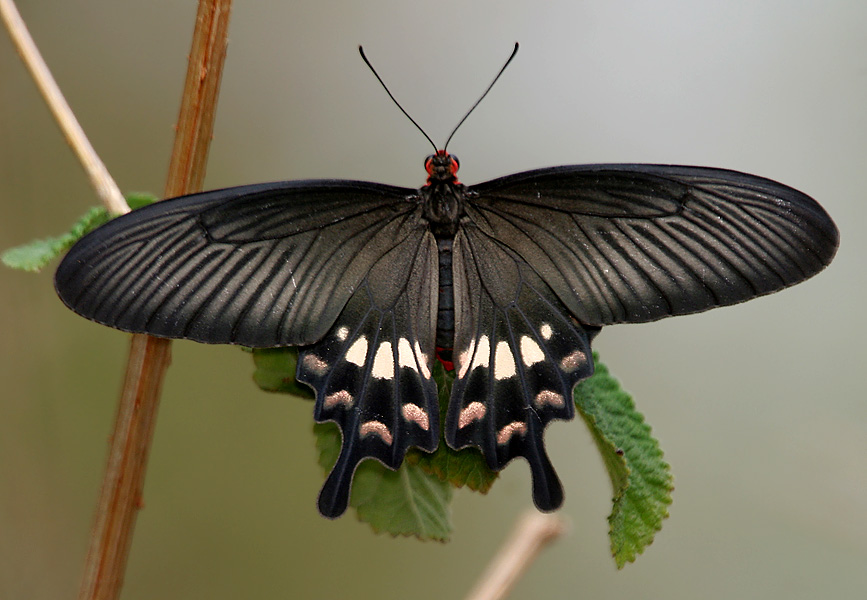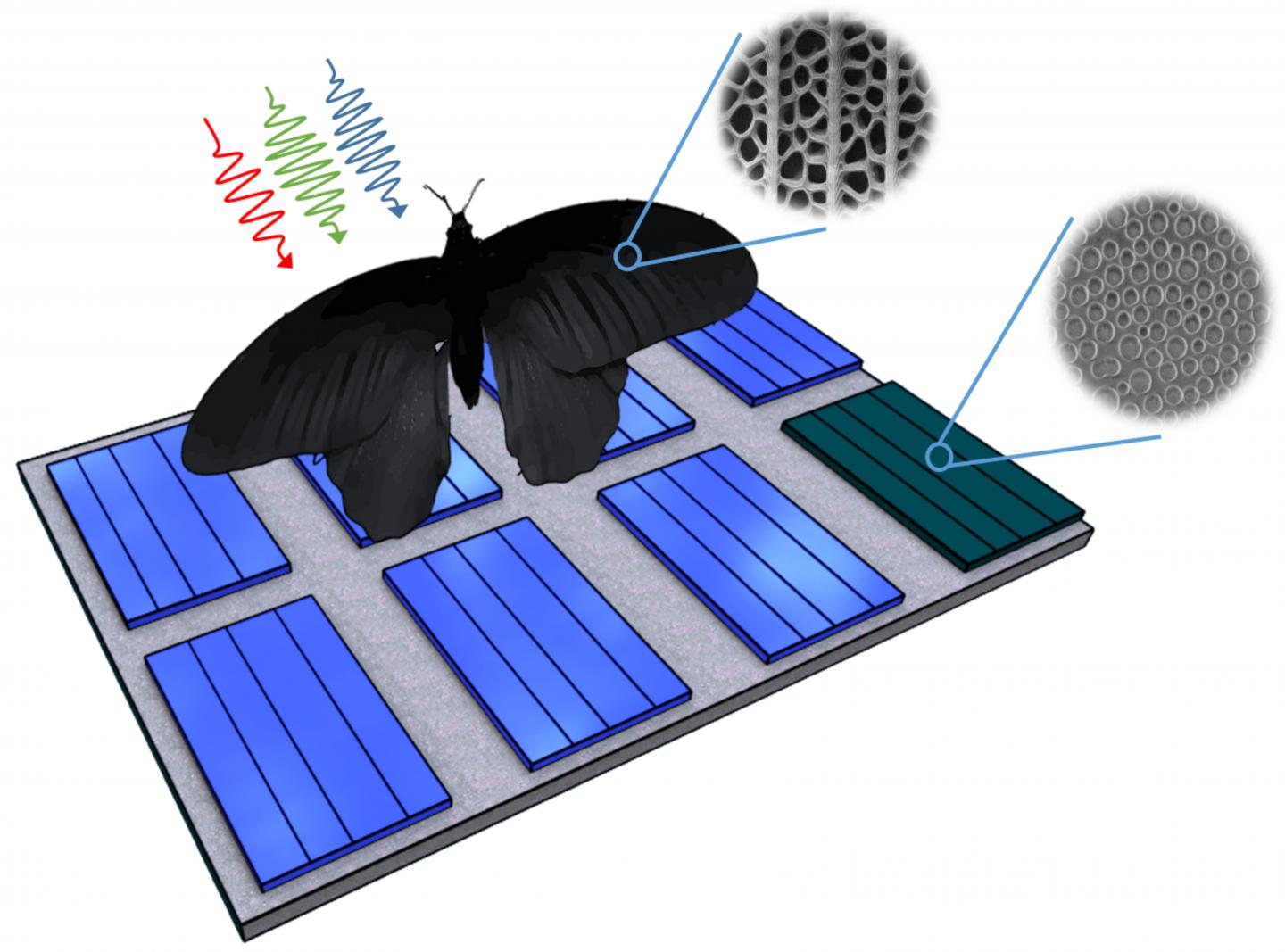
Researchers at the Karlsruhe Institute of Technology in Germany have been working on improving the efficiency of thin-film solar cells, a technology which is promising for lower cost photovoltaic installations. They have been inspired by the common rose butterfly, Pachliopta aristolochiae, widespread in India and Southeast Asia, which has deep black wings, indicating that they are very efficient at absorbing, rather than reflecting, light.
Thin-film solar cells have a light-absorbing layer 1000 times thinner than that of crystalline solar cells, making them much cheaper as they use less material. However, because they tend to absorb less light, they are currently less efficient than crystalline technology, and tend to only be used for applications which need little power, such as small electronic devices. Improving the light absorption promises to boost their efficiency, which could open up their potential applications, allowing them to be used on rooftops, for example.

"The butterfly studied by us is very dark black," said Dr Hendrik Hölscher of KIT's Institute of Microstructure Technology (IMT), who led the research along with Radwanul Siddique.
"This signifies that it perfectly absorbs sunlight for optimum heat management. Even more fascinating than its appearance are the mechanisms that help to reach the high absorption. The optimisation potential when transferring these structures to photovoltaics (PV) systems was found to be much higher than expected."
Hölscher and Siddique found that the wings' light absorbing properties were conferred by a pattern of tiny holes. Using a scanning electron microscopy, they determined that the holes are 133 to 343 nanometres in diameter, and distributed in a disordered pattern. They then used a computer simulation to determine the effectiveness of different patterns of whole sizes and distributions. Perhaps unsurprisingly, the disordered distribution of hole positions and diameters was shown to be the most efficient, producing the most stable absorption rates over the complete spectrum at variable angles of incidence, with respect to periodically arranged monosized nanoholes.
As the researchers report in the journal Science Advances, the next step was to synthesise silicon films with the same pattern and distribution of nanoholes, and assess their effectiveness at light absorption in photovoltaic cells. Compared with the smooth surface, the butterfly wing surface displayed 97 per cent higher absorption rates for perpendicular light, rising continuously as the incidence angle decreases, reaching 207 per cent for an instant angle of 50°.
"This is particularly interesting under European conditions. Frequently, we have diffuse light that hardly falls on solar cells at a vertical angle," Hölscher said.
This does not necessarily mean that the efficiency of the cell increases by the same amount, said co-researcher Guillaume Gomard. "Also other components play a role,” he said. "Hence, the 200 percent is to be considered a theoretical limit for efficiency enhancement."
The team worked with hydrogenated amorphous silicon. However, they state that any type of thin-film photovoltaic technology would display the same effect, and that they could be synthesised on an industrial scale.




Red Bull makes hydrogen fuel cell play with AVL
Formula 1 is an anachronistic anomaly where its only cutting edge is in engine development. The rules prohibit any real innovation and there would be...